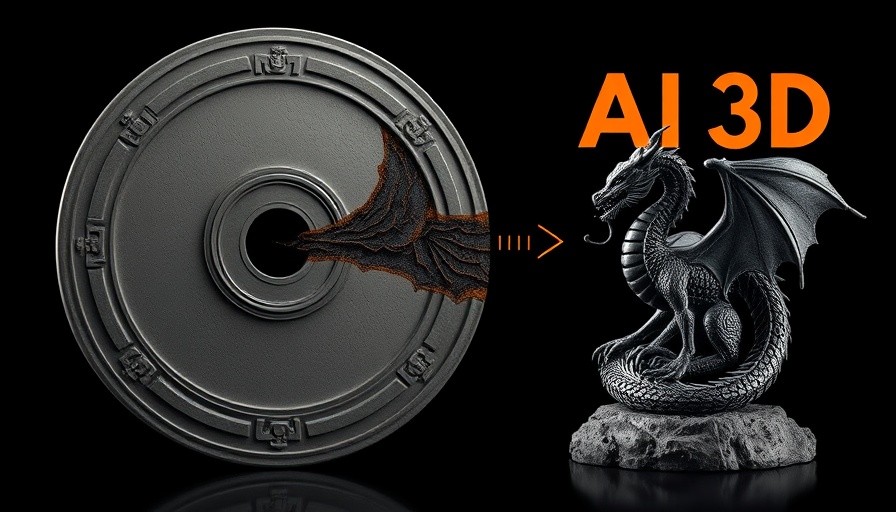
How AI is Revolutionizing 3D Model Creation
Imagine a world where creating 3D models for virtual environments or animated films is as easy as typing a few words into a prompt. Recent developments in artificial intelligence (AI), particularly from NVIDIA, are pushing this dream closer to reality. Their latest research showcases a revolutionary technique that significantly improves the process of generating 3D geometry from point clouds—a significant leap from the traditional methods requiring hours of manual labor by skilled artists.
In ‘NVIDIA’s New AI Grows Stuff Out Of Nothing!’, the discussion dives into revolutionary advancements in AI 3D model creation, exploring key insights that sparked deeper analysis on our end.
The Evolution of 3D Modeling
Historically, detailed 3D models required painstaking craftsmanship using software like Blender. Creating a mesh often took hours of meticulous work, requiring not just artistry but a deep understanding of geometry and texture. However, NVIDIA's research reveals that AI can streamline this process dramatically. By training a model to generate meshes from point clouds—representative points in 3D space—the methodology shifts the burden from complex geometry creation to simpler point cloud generation.
New Innovations and Their Implications
The implications of this research extend far and wide within the tech industry. This new model produces higher quality geometries with significantly fewer artifacts than previous methods. It allows for smoother surfaces and cleaner designs, bridging the gap between complex AI-generated images and usable 3D models. With models capable of being 40 times more detailed than existing techniques, industries like video game development and animated filmmaking stand to revolutionize their production processes.
Utilizing AI for Efficiency and Quality
This innovation presents an incredible opportunity for business owners in creative sectors. The ability to quickly generate detailed 3D models not only reduces the workload on artists but also opens the door to rapid prototyping and iteration in creative projects. For example, game developers can easily adjust the polygon count of models to match the rendering capabilities of various platforms, ensuring smoother game play without compromising quality. Additionally, the system’s efficiency—requiring 50% less memory and operating 2.5 times faster than previous models—means businesses can scale their production more effectively.
A Discussion on the Tech’s Limitations
While the advancements are promising, it’s worth noting some remaining limitations. For instance, the current system’s reliance on point clouds means users will still need to generate these before creating a mesh. Moreover, the technology is not without its flaws—artifacts and imperfections can still persist, particularly in models that demand exceptionally high detail. This calls for a balance between waiting for advanced technology and leveraging the current tools available effectively.
Future Trends in AI and 3D Modeling
Looking ahead, as AI research progresses, we can expect even more sophisticated methods of generating 3D models directly from text prompts. Busy professionals in industries affected by AI innovations should keep an eye on these developments, as they may soon have AI capable of producing even more intricate models directly from user inputs. This continued evolution could potentially reshape entire industries, making production faster, more accessible, and more cost-effective.
Thus, for businesses looking to stay ahead of the curve, investing in AI technology for 3D modeling could become not just a competitive edge but a necessity. Embracing this innovation could result in significant savings of time and resources while also freeing up creative talent to focus on more complex and rewarding aspects of their projects.
If you’re ready to explore how AI can propel your business forward, consider taking proactive steps to integrate this technology into your operations. GET AI WORKING FOR YOU TODAY and position yourself as a leader in your field, embracing the future of innovation.
 Add Row
Add Row  Add
Add 




Write A Comment